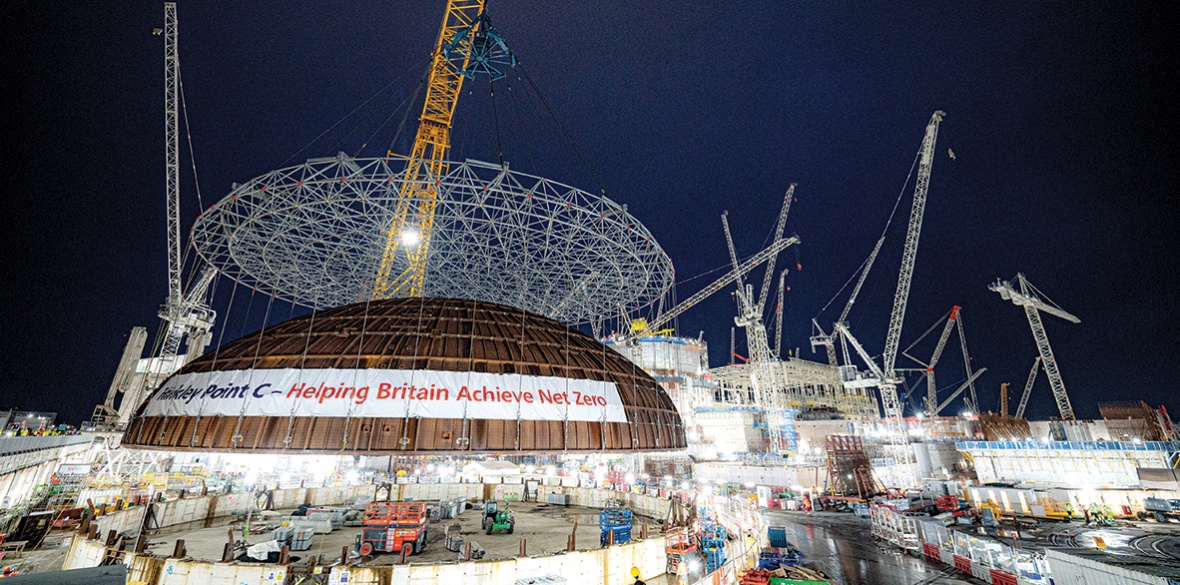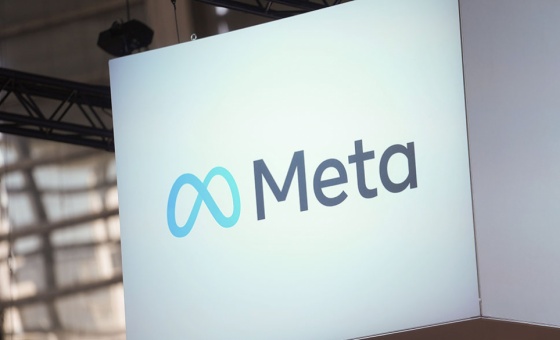This is the last article you can read this month
You can read more article this month
You can read more articles this month
Sorry your limit is up for this month
Reset on:
Please help support the Morning Star by subscribing here
IS KEIR STARMER really so desperate to bask in the orange glow of omnipotence radiating from the monomaniacal US president that he feels compelled to parrot Donald Trump’s catchphrases?
Apparently yes. Starmer really did say “build, baby build.”
The context for this abhorrent utterance was his announcement that mini-nuclear power plants — known as small modular reactors — would proliferate across Britain until they are “commonplace.”
According to Starmer, they would be smaller and cheaper than current nuclear power plants. Those living near nuclear construction sites could be compensated for this inconvenience with lowered electricity rates. New reactors would be in place by 2032.
All of this is completely unsubstantiated by any shred of empirical evidence, but more on that in a moment.
Starmer’s “fast forward on nuclear” would, he claims, deliver a supply of good jobs as well as “homegrown power.” (If you are searching a UK map for the “homegrown” uranium mines that would supply the fuel for these reactors, keep looking.)
The restriction on building new reactors on existing nuclear sites is to be lifted so they could be built anywhere and everywhere and people who “hadn’t thought there’s going to be anything nuclear near me” will simply “get used to the idea of it,” Starmer said.
Oddly, the first new site doesn’t appear to be adjacent to Number 10 Downing Street.
The whole thing is of course a massive con that would, if such a plan ever materialised, dramatically raise electricity rates, further fleece taxpayers, impede real progress on climate by diverting money away from already available renewable energy solutions, and put countless communities in danger.
And of course, what will become of the radioactive waste these “small” reactors would still produce? A recent Stanford study found that small modular reactors will actually generate more radioactive waste than conventional nuclear power plants.
Unions should not be fooled. Promising jobs that will likely never materialise and would be better created immediately in industries such as renewable energy that are here now and have a long-term future, isn’t a boon to working people, it’s yet another betrayal.
Further, nuclear power, as the industry has itself demonstrated over and over, is the slowest and most expensive energy choice among the so-called low-carbon options.
No nuclear reactor, small or otherwise, will ever be built in time, affordably or in enough quantities to address the climate crisis that is already upon us.
Study after study shows that greater carbon emissions can be achieved far faster by investing the same amount in renewable energy instead of nuclear power.
The Starmer government is deliberately ignoring that to pander to big corporations rather than invest in the public good.
Nuclear power is in any case not low-carbon, and certainly not carbon-zero as the industry often brags.
The Hinkley Point C two-reactor site on the Somerset coast will have used between 200,000 to one million tons of steel by the time the two reactors are complete, according to various estimates, and will consume the equivalent electrical power of a small country.
Further, nuclear power, unlike the renewable energy industry, has demonstrated negative learning by actually becoming slower to build and more expensive over time.
In October 2021, Lazard, one of the world’s leading financial advisory and asset management firms, calculated that the average construction cost of a utility-scale photovoltaic plant in the US was £695 per kilowatt of generation capacity. A nuclear plant, it said, would cost around £8,185 per kilowatt — almost 12 times as much.
A Sussex University study looking at 180 nuclear construction projects around the world found that 175 of them took, on average, 64 per cent more time than anticipated with final costs 177 per cent higher than originally predicted.
Small modular reactor projects will be more expensive than conventional nuclear plants because, being so small, they have poor economies of scale, requiring massive upfront orders to make a factory producing them financially viable.
Small reactors also require an equally massive deployment in order to generate the equivalent amount of energy currently produced by large-sized reactors. It’s why the industry has rejected small modular reactors for decades.
Wealthy corporations such as Rolls-Royce, one of the companies eager to build small modular reactors in Britain, are not willing to shoulder any of this risk. But, under Starmer’s scheme, the high costs of new reactor development and construction will be passed on to consumers and taxpayers.
In fact, this is already in place. A new Regulated Asset Base (RAB) funding model came into force in the UK in May 2022. RAB incentivises private investment in new nuclear projects by charging consumers through their electricity bills — with no guarantee that the nuclear plant will ever be completed.
This is precisely the fate that befell ratepayers in South Carolina in the US, where a similar law is in place and where two planned reactors were abandoned in 2017, by which time ratepayers had paid £1,6 billion for reactors that would never deliver a watt of electricity.
The extent to which the nuclear choice is a bad deal for Britain was made plain back in 2020, when the UK Department for Business, Energy and Industrial Strategy estimated that a large-scale solar project targeted to become operational in the UK in 2025 would produce electricity with a levelised cost of £44 per megawatt hour. Its estimate for nuclear power was £102 per megawatt hour. (Levelising takes into account all variable costs from licensing, construction, operation and eventual decommissioning and waste management.)
No nuclear corporations — not even multibillionaire Bill Gates’s nuclear reactor company Terrapower — will build new nuclear plants without charging both consumers and taxpayers to do it. Gates has asked the US government — ie US taxpayers — to foot half of his project’s likely underestimated £3.2 billion cost.
As physicist MV Ramana points out in his new book Nuclear Is Not The Solution, corporations only embark on new nuclear projects “when the public can be made to bear a large fraction of the high costs of building nuclear plants and operating them, either in the form of higher power bills or in the form of taxes.”
Starmer’s aspirations of empire that would make little Britain “one of the world’s leaders on nuclear” are no more than a craven capitulation to Rolls-Royce and other corporations, which have been complaining for years that the process in place is too arduous and slow, with too many regulatory hurdles. (Let’s not forget that Rolls Royce is an integral part of Britain’s nuclear weapons complex. Late last month the company got a new £9bn eight-year deal to support Britain’s nuclear submarine programme, the most lethal destructive force on Earth. This is not a coincidence.)
Cue Starmer’s Nuclear Regulatory Taskforce announced with a brazen headline on the government’s own website: “Government rips up rules to fire-up nuclear power.”
The taskforce mandate is ostensibly to fast-track and streamline approval of new reactor design and development. But despite Starmer’s protestations that there would be “no compromise on safety,” the phrases “fast-track” and “streamline” are code for precisely that; safety shortcuts.
Ripping up the rules is exactly what this is about — the rules concerning safety. They were there for a reason, given nuclear power is the most lethal method yet discovered by which to boil water. And reducing safety oversight is a particularly dangerous drift given that none of the current small modular reactors — still effectively just drawings on paper — have proven safety records.
Indeed, quite the opposite. Whether they are based on miniature versions of the traditional pressurised water reactor, such as those being built at Hinkley Point C, or “fast reactors,” none are new designs and all have significant known safety flaws.
Even the US Nuclear Regulatory Commission, a willing industry lapdog, declined the design submitted by Oklo for its 15-50 megawatt Aurora micro reactor because the company could not answer fundamental safety questions.
“Oklo’s application continues to contain significant information gaps in its description of Aurora’s potential accidents as well as its classification of safety systems and components,” the NRC wrote.
That should be a warning for the British public who are not being asked but told by the Starmer government that they must accept a nuclear reactor in their community for the good of the country’s “energy security.”
This threat is perhaps the most sinister part of the entire new nuclear announcement. There will be no dissent. The Starmer government will “push past nimbyism,” “take on the blockers” and “break through” any line of resistance from MPs minded to prevent a mini-Chernobyl happening in their constituents’ backyards.
While his autocratic idol in Washington DC continues to fling out a daily stream of fascistic executive orders like a hippopotamus with diarrhoea, Starmer is seemingly striving to match him at every turn.
Whether it’s stripping pensioners of life-saving winter fuel allowances, keeping children in poverty by refusing to lift the two-child benefit cap, autocratically arresting peaceful protesters on climate or Palestine, or misleading the British public with false promises about nuclear power, Starmer is consistent in at least one regard: making one bad decision after another.
The new nuclear plan is a “great opportunity” for Rolls-Royce, a company so deserving it ranks as “among the best in the world,” crowed Starmer. Maybe he’s just looking for a shiny new car to go with those free designer suits and A-level crash pads?
Linda Pentz Gunter is a writer based in Takoma Park, Maryland, and the founder of Beyond Nuclear, a non-governmental anti-nuclear advocacy group.







